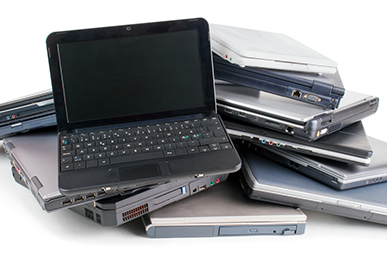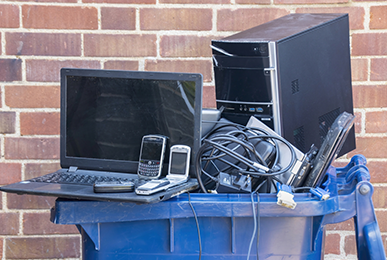
In an age where technology evolves at lightning speed, people often upgrade their computers to keep up with the latest trends and functionalities. However, what happens to the old computers that are replaced? Many choose to recycle their outdated machines, which is eco-friendly and essential in reducing electronic waste. Management and Recycling is a noble act, but before one part with their faithful electronic companion, a crucial step must be taken: ensuring that all personal data is thoroughly deleted. This step is vital to prevent sensitive information from falling into the wrong hands.
Table of Contents
The Importance of Data Deletion Before Management and Recycling
Deleting data from a computer before recycling is akin to shredding important documents before throwing them away. Just as one wouldn’t want their personal letters or bank statements to be read by strangers, similarly, personal files, photographs, and other sensitive information stored on a computer must be securely erased. This process is critical because information is power in the digital world. This power can lead to privacy breaches, identity theft, and even financial loss in the wrong hands.
Step-by-Step Guide on How to Delete Data Securely
Step 1: Backing Up Important Files
Before proceeding with the deletion process, backing up any important files is paramount. These could be personal photos, documents, videos, or any other data that one might need in the future. There are several ways to back up data, including using an external hard drive, cloud storage services, or USB flash drives. This step ensures that valuable information is not lost while the computer is prepared for recycling.
Step 2: Deauthorizing Programs and Accounts
Many applications and services limit the number of devices users can install or log into their accounts. Before wiping the computer clean, it’s crucial to deauthorize any programs that limit activations. This process might include software like Adobe Creative Suite, iTunes, or even certain video games. Additionally, be sure to log out of all personal accounts and services. This measure prevents future users from accessing one’s accounts or personal information.
Step 3: Wiping the Hard Drive
Deleting files or formatting the hard drive is insufficient, as data recovery tools can easily retrieve this information. To securely erase data, one must use a hard drive wiping tool. These tools overwrite every bit of information on the hard drive with random data several times, making it nearly impossible to recover any original data. Popular wiping tools include DBAN (Darik’s Boot and Nuke) for traditional hard drives and specialized software for solid-state drives (SSDs).
Step 4: Reinstalling the Operating System
After the hard drive has been wiped clean, the next step is to reinstall the operating system (OS) that came with the computer. This step is not strictly necessary for recycling, but it’s a courteous gesture for the next user. Reinstalling the OS ensures the computer is ready to use out of the box, making it easier for recycling centers to refurbish and pass it on to its next owner.
Step 5: Physically Cleaning the Computer
Before saying goodbye, giving the computer a good physical clean is a nice touch. Using a microfiber cloth and some isopropyl alcohol, gently clean the keyboard, screen, and exterior surfaces. This act makes the computer more presentable and helps maintain hygiene standards, especially if the device is donated for use by others.
Advanced-Data Deletion Methods and Preparing for Management and Recycling
While the basic steps outlined in the first part of this guide provide a strong foundation for deleting data, there are more advanced methods and considerations for those who want to ensure their data is as secure as possible. Moreover, understanding how to prepare a computer for recycling is crucial. This part delves deeper into these aspects, ensuring that one’s digital footprint is erased precisely before one’s computer embarks on its next journey.
Using Encryption for Added Security
Encrypting the data before wiping the hard drive can add an extra layer of security. Encryption converts the data into unreadable code without the correct key or password. Even if data recovery tools are used after wiping, the recovered data will remain encrypted and, therefore, inaccessible. Tools like BitLocker on Windows or FileVault on macOS can be used. Encrypting the entire drive before using a wiping tool ensures that any remnants of the original data are securely scrambled.
Employing Professional Data Destruction Services
Professional data destruction services are an option for those who are not confident in their ability to delete data securely or have extremely sensitive information on their computer. These services use high-grade software and hardware tools to ensure data is irretrievably destroyed. They often provide a certificate of destruction, offering peace of mind that the data has been professionally handled. This option might particularly appeal to businesses or individuals with highly confidential data.
Preparing for the Management and Recycling Process
Finding a Reputable Management and Recycling Center
Not all recycling centers are created equal. Finding a reputable recycling center that adheres to responsible recycling practices is important. This ensures that the computer is properly recycled or refurbished and passed on to someone who can use it. Reputable centers often have certifications like e-Stewards or R2, indicating they follow high environmental safety and data privacy standards.
Understanding the Management and Recycling Center’s Process
Before handing over the computer, inquire about the recycling center’s process. Some centers may offer additional data destruction services as a precaution. They might also detail how they refurbish usable computers for donation or sale. Understanding these processes ensures that the computer and any residual data are handled responsibly.
The Final Check
Before leaving the computer at the recycling center, perform a final check. Ensure all external storage devices, such as USBs or CDs, have been removed. Double-check that the hard drive is indeed wiped and that the operating system has been reinstalled if you choose to do so. Lastly, ensure that no personal items, such as SD cards or documents, are left with the computer.
Conclusion
Management and Recycling a computer is commendable, reflecting a commitment to environmental sustainability and responsible technology use. However, securing one’s data in this process cannot be overstated. Following the steps outlined in this guide, individuals can confidently recycle their computers, knowing they have taken the necessary precautions to protect their personal information. This safeguards one’s privacy and contributes to the broader effort of promoting ethical and sustainable technology practices.





